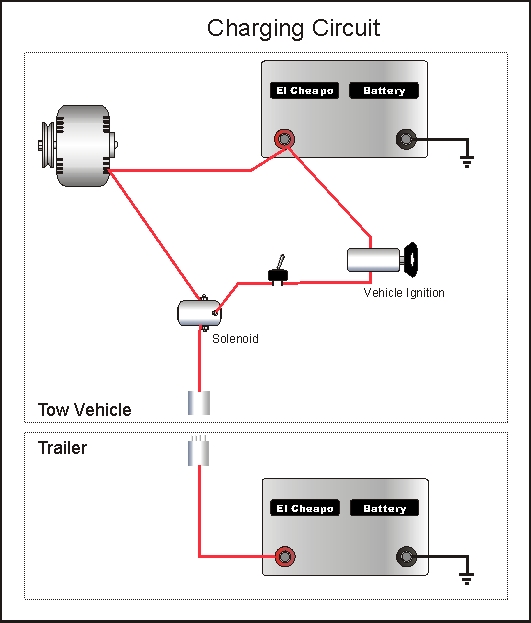Dale M. wrote:More than you ever wanted to know about "storage batteries"....
http://www.batteryfaq.org/
Another good one here
http://www.windsun.com/Batteries/Battery_FAQ.htm
Don
Dale M. wrote:More than you ever wanted to know about "storage batteries"....
http://www.batteryfaq.org/
mrchuc wrote:I just took delivery of a new Little Guy 4-Wide Platform TD. I ordered it with a deep cycle battery and wiring for 12 volts in the TD. It is also set up to charge from the tow vehicle while driving.
I am new to all this and so I read everything I could in sdtripper2's index related to batteries. That was a BIG help. To keep the battery in good condition, I ordered the Battery Tender Plus.
One thing confused me though.In one of the posts, it was stated that having the battery hooked up to the tow vehicle is not a good idea. As I remember it, the writer said that if I start out on a trip with a fully charged battery (as mine will be having been tended by the Battery Tender Plus), that I will actually lose charge as I drive and that I will arrive with only 70% charge. That would not be good at all.

1. Does that seem correct?
2. If so, should I disconnect the charging wire (or put a switch on it to keep it off when not needed)?
3. Also, if so, is there something I can do to use the tow vehicle's power to keep the TD's battery topped off correctly.
Finally, can someone enlighten me on why this is or is not true?
Thanks, everyone, for making this forum such a great resource.


Alphacarina wrote:Joanne
Excellent diagram - That's an economical alternative to the much more expensive ACR I mentioned . . . . though not quite as foolproof since it can still accidently be left off if you forget about it . . . . or left on with the engine not running, again if you forget about it
I hope what you have labeled as a 'solenoid' is really a 'relay' because soleniods were designed for intermittant duty, such as energizing a starter for a few seconds at a time and not being engaged for hours on end. You don't need anything capable of handling 200 amps or more like a soleniod can - A cheap 20 amp relay would do you just fine
If it is really a solenoid, check it (carefully) with your hand after it's been turned on for half an hour or so - It will likely be very HOT! and that may not be a good thing, longterm
Don
Joanne wrote:Alphacarina wrote:... though not quite as foolproof since it can still accidently be left off if you forget about it . . . . or left on with the engine not running, again if you forget about it...
...I don't understand how the relay will stay on with the engine off though, because the ignition key is in series with the switch. Removing the ignition key OR turning off the switch will deactivate the relay.

Users browsing this forum: No registered users and 3 guests